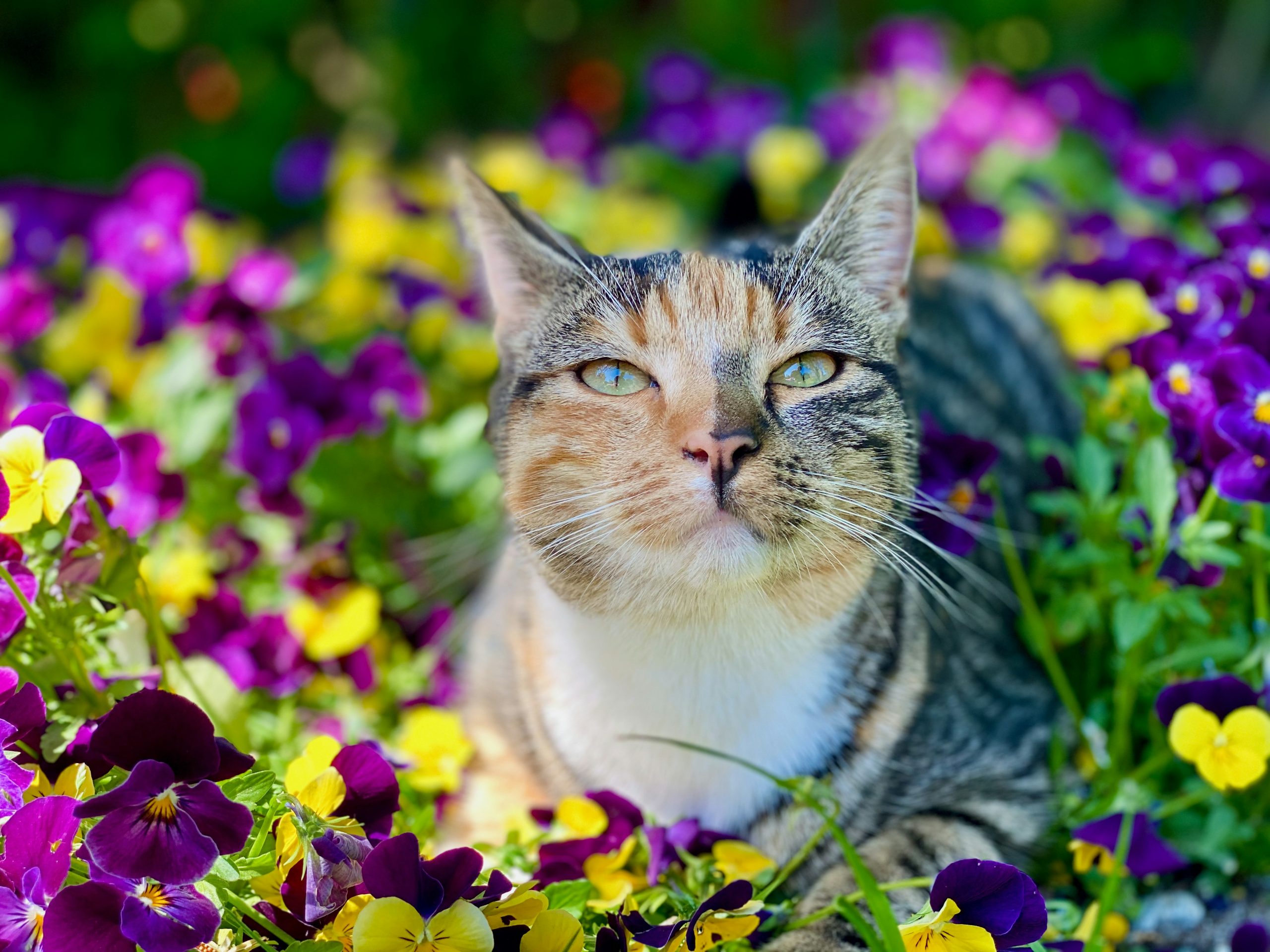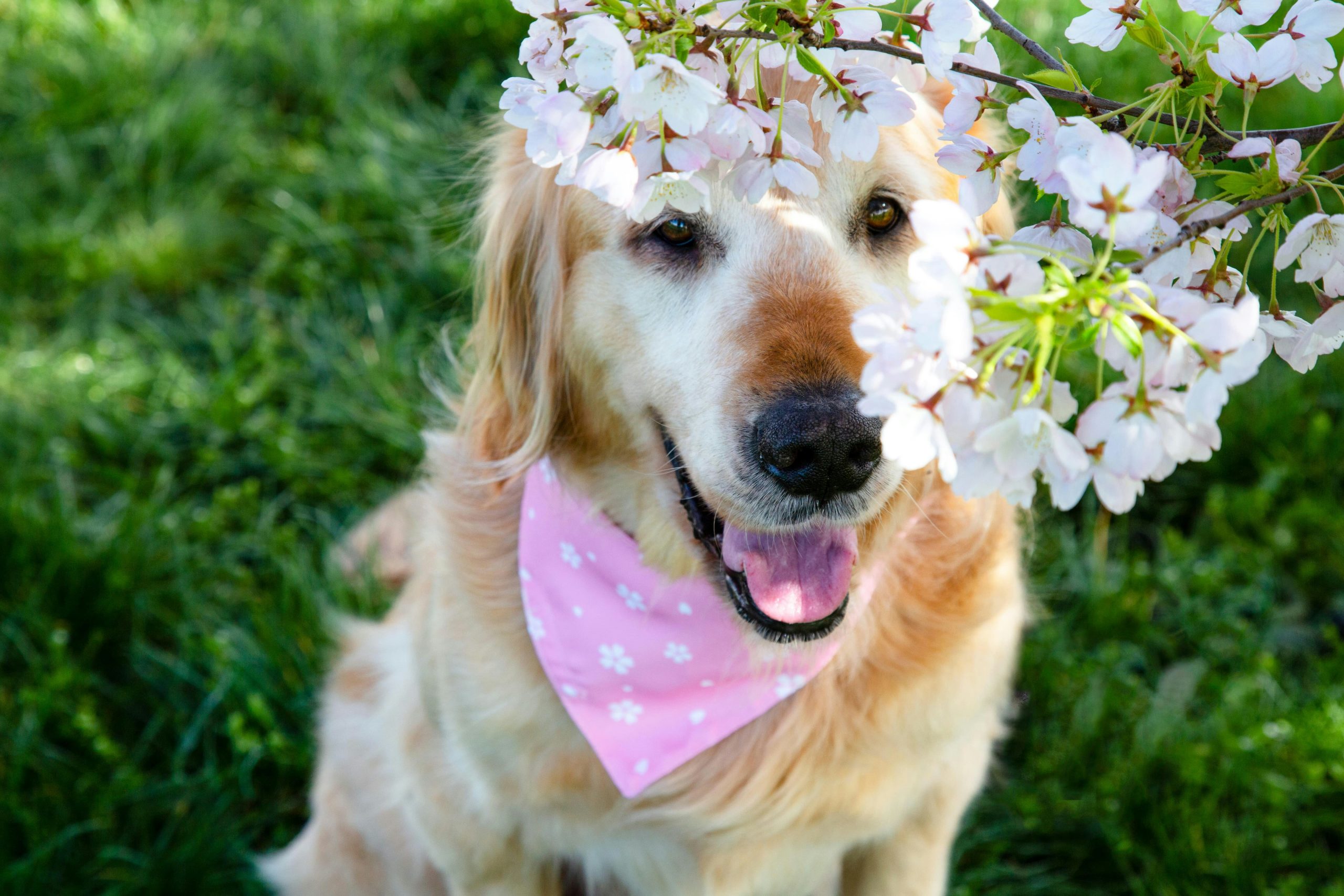With spring comes more opportunities to spend time in the sunshine. However, if you’re planning to plant some new flowers or bring a fresh bouquet inside, there are some flowers you need to ensure stay out of your pet’s way. Let’s go over some spring plants that are harmful to cats and dogs, so you know which spring blooms to bring in this season.
If your pet is in distress from eating a spring plant, please call your emergency veterinarian immediately. We’re happy to help—give us a call at 919-605-6300.
Why Lilies Are Especially Dangerous

Are Lilies Toxic to Cats?
If you have cats, you know how curious they can be—and that’s why you should keep any lilies either well out of reach or, preferably, out of the house entirely. Some types of lilies, like true lilies or daylilies, are highly toxic for cats, even leading to kidney failure and death. Every part of the plant, from the pollen and leaves to the water in the vase, is toxic.
Are Lilies Toxic to Dogs?
Many types of lilies are toxic to dogs. As with cats, all parts of the plant, including pollen and vase water, are toxic. Though lilies are harmful to dogs, they have somewhat less severe effects on dogs, with gastrointestinal upset lethargy and excessive drooling presenting as the main symptoms.
FAQs: Lilies and Plant Safety
To ease your mind, let’s discuss the safety of some specific types of lilies.
Are Easter lilies poisonous to cats?
Yes, all parts of Easter lilies, from stem to pollen and vase water, are considered poisonous to cats. Ingestion of even a small amount of the plant can lead to severe symptoms, up to and including death. We’d recommend skipping these flowers if you have pets, especially cats.
Are tiger lilies poisonous to dogs?
Yes, though beautiful, ingesting tiger lilies is harmful to your dog. Again, all parts of the plant can potentially cause harm, so keep them out of your home and keep your dog on a leash on walks to ensure they stay safe when they’re sniffing neighborhood plants.
Are peace lilies poisonous to dogs?
Peace lilies are toxic to dogs, and should be kept away from most pets. They cause gastrointestinal distress, excess drooling and lethargy, so be mindful while out and about with your dog in spring.
Are canna lilies poisonous to dogs?
Canna lilies are not true lilies, belonging to a different botanical family, and thus are wonderful, pet-safe options for your vases and gardens. While canna lilies are non-toxic to cats and dogs, they are not edible. If your pet eats part of a canna lily, they may experience some mild digestive upset. However, they are not known to be a threat to your pet’s health.
Other Spring Plants and Flowers Harmful to Pets
Tulips and Daffodils
All parts of tulips and daffodils, particularly the flowers’ bulbs, are toxic, containing compounds harmful to both cats and dogs. Even leaves and flowers alone can be enough to trigger a reaction, so it’s best to keep these well away from your pets. Symptoms include but are not limited to: gastrointestinal upset, excessive drooling, lethargy and seizures.
Hyacinths
Every part of a hyacinth is toxic to cats and dogs, but especially the bulb. If you choose to plant any hyacinths in your yard, we’d recommend fencing it off to protect your pet—but it’s best not to plant them at all. Symptoms of hyacinth ingestion include vomiting, diarrhea and excessive drool among others.

Azaleas and Rhododendrons
Azaleas and rhododendrons are particularly dangerous to your pets. Ingesting any part of these plants can cause gastrointestinal distress, excessive drooling and lethargy as well as severe cardiovascular issues, up to and including heart failure. Though beautiful, keep these out of your yard.
Sago Palm
Sago palms, while lovely, are highly toxic to cats and dogs. All parts of the plant, including seeds, are considered dangerous to their health. Sago palms contain cyasin, a toxic compound that causes liver damage or failure in pets.
Symptoms of Plant Poisoning in Cats and Dogs
The most common symptoms are gastrointestinal upset, but here is a more comprehensive list:
- Gastrointestinal upset (vomiting or diarrhea)
- Excess drooling
- Lethargy or weakness
- Loss of appetite
- Abdominal pain
- Rapid heart rate
- Seizures
What to Do If Your Pet Eats a Toxic Plant
First of all, do not panic. Remain calm and call your veterinarian. (You can reach out to us here.)
If your pet is in distress, it’s best to act quickly. Call your emergency veterinarian immediately to let them know your pet has ingested a toxic plant.
Your vet may give you further guidance, which you should follow to the letter. Likely they’ll tell you to remove any plant matter from your pet’s mouth or fur as a first step. That will keep them from consuming more of the plant. Your vet may even ask you to take a picture of the plant matter to determine how much of the plant your pet has consumed, which will determine the next steps.
If treatment is required, get your pet to the veterinarian’s office as quickly as you can.
Simple Tips to Keep Your Pet Safe

We understand wanting to keep some spring blooms around your home this time of year. There are steps you can take to enjoy the season without compromising your pet’s safety. Let’s explore your options:
- The best way to make sure your pet stays safe is to plant a pet-safe garden and only bring those blooms inside. Try flowers like African violets, canna lilies and marigolds.
- If your yard has toxic plants in it, there are options beyond simply uprooting them. Place a fence or barrier around plants to keep curious pets away.
- For indoor plants, plant stands with no nearby surfaces are your safest bet for toxic plants. Still, why not switch them out for lemon balm or a simple catnip plant?
Protect Your Pet This Spring
Ultimately, your job as a pet owner is to ensure your home is safe for your pets. Reading this blog means you’re doing a good job of educating yourself on what plants to avoid! If you’re ever in need or simply have a question, we’re here for you and your furry family member.


